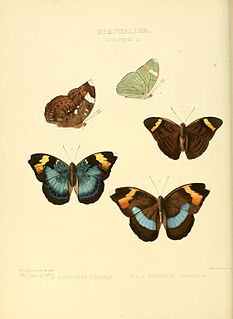| Euriphene | |
|---|---|
 | |
| Euriphene kahli | |
| Scientific classification | |
| Kingdom: | |
| Phylum: | |
| Class: | |
| Order: | |
| Family: | |
| Subfamily: | |
| Genus: | Euriphene Boisduval, 1847 |
| Synonyms | |
| |
Euriphene is a butterfly genus in the subfamily Limenitidinae. The 70 or so member species are confined to the Afrotropical realm. They are found mainly in the Guinean Forests of West Africa and the Congolian forests.
